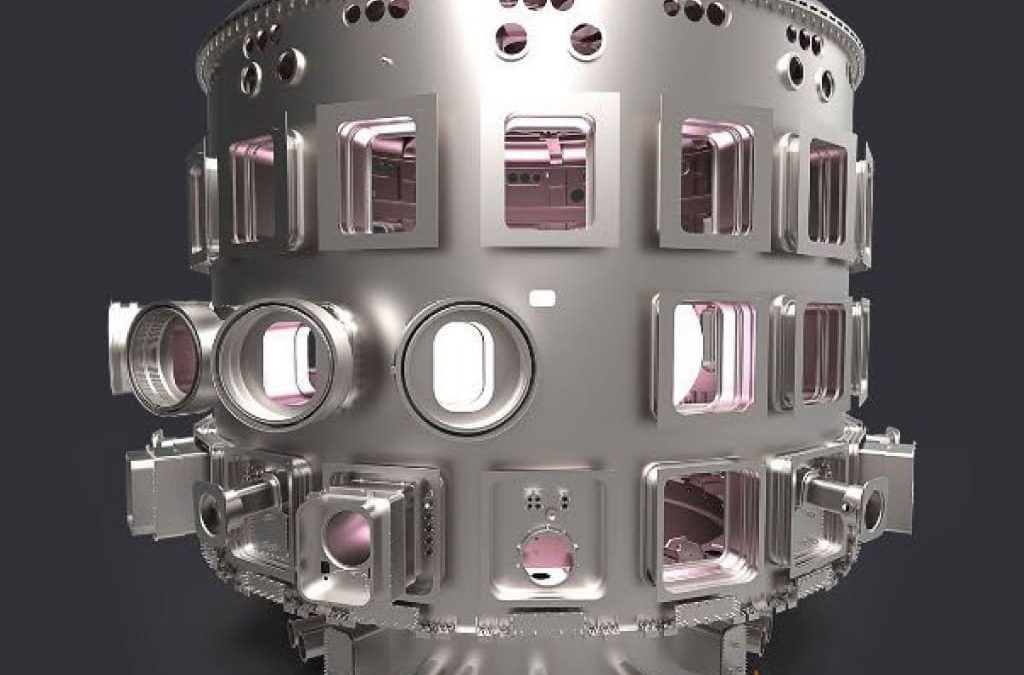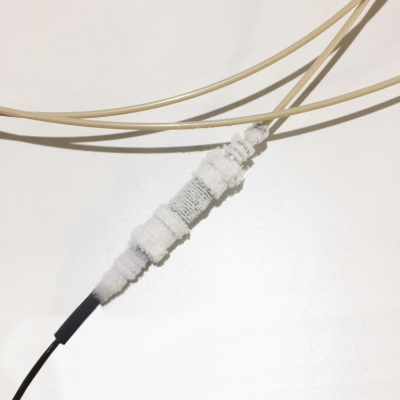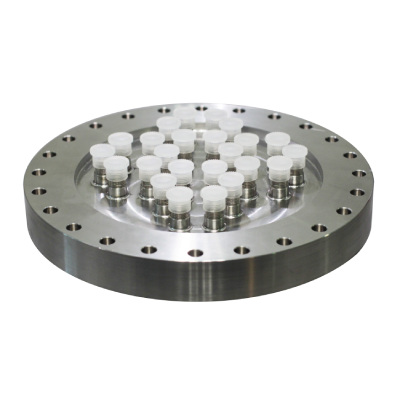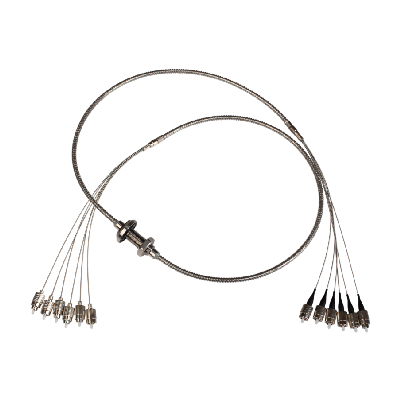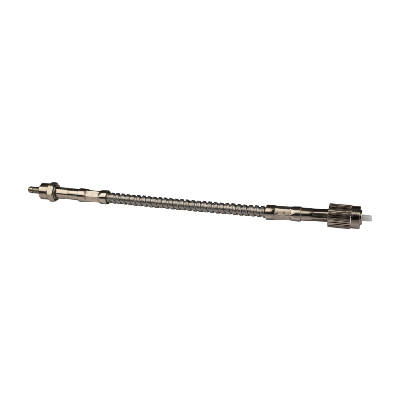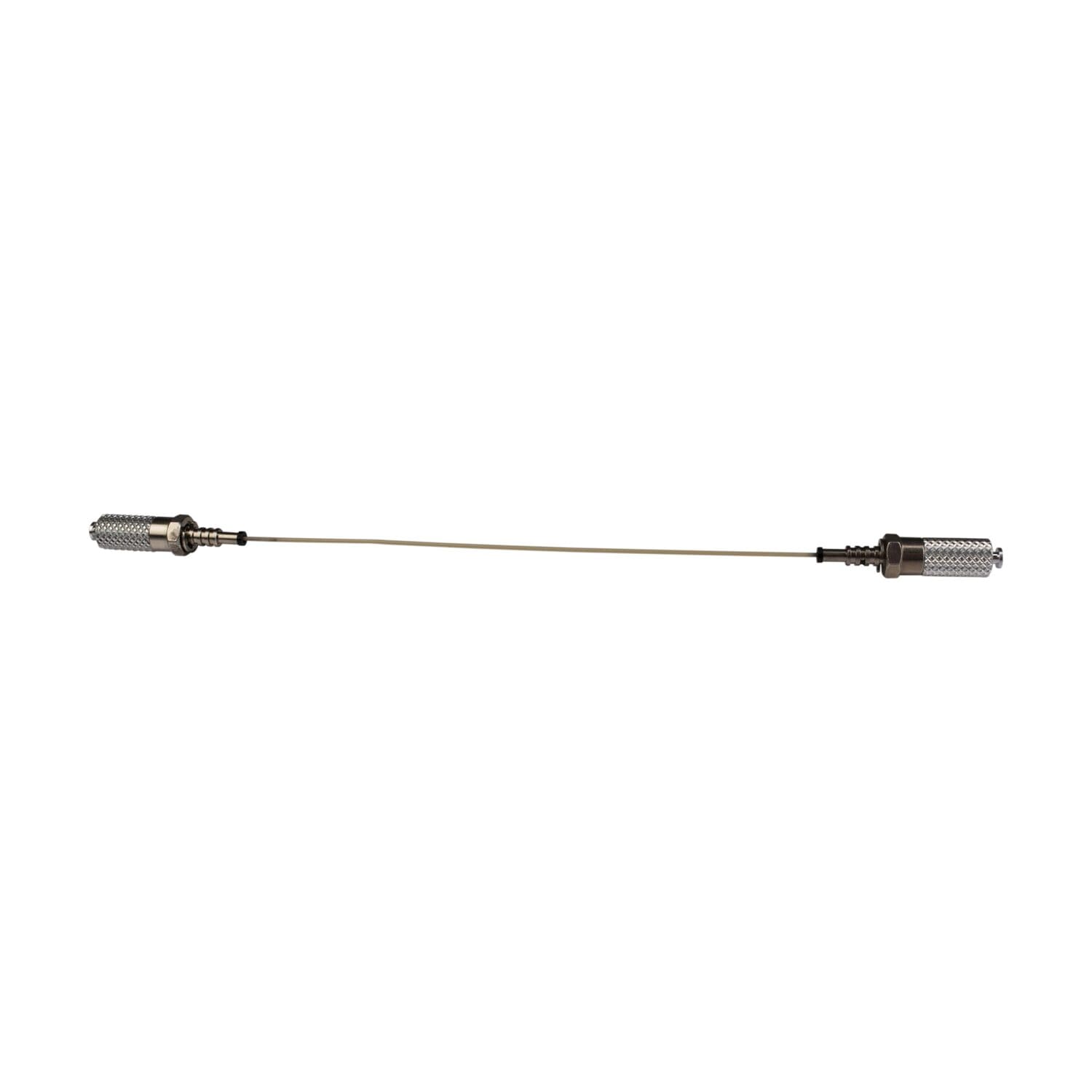MultichannelHermetic connector
HERMOPTIC®: Multichannel glass-soldered fiber-optic connector for the international ITER project.
As part of the International Thermonuclear Experimental Reactor ITER project, CONESYS Europe and SEDI-ATI Fibres Optiques have realized a 100% mineral hermetic multi-channel optical base plate for optical metrology in radiative and cryogenic environments.
MajorConstraints
The connector must:
- Resist to radiations and cryogeny,
- Be perfectly hermetic,
- Use 100% inorganic materials.
TheChallenge
Create a hermetic connector based on optical fibers that meets the constraints of the radiative and cryogenic environments of a nuclear fusion reactor tokamak-type.
ITER, what is it?
ITER is an international project for a civil nuclear fusion research reactor of the tokamak* type, located near the Cadarache nuclear research center, in Saint-Paul-lez-Durance, France.
European Union, United States, Japan, Corea, China, India and Russia are engaged in the ITER construction, the biggest tokamak ever designed: twice the size of the biggest machine in operation, with a ten times bigger plasma volume. ITER members ambition, through this titanic project, is to reproduce on Earth the unlimited energy that aliments the Sun and the stars.
Thus, ITER tokamak is an experimental machine designed to scientifically and technically demonstrate that, fusion (a nuclear reaction that aliment Sun and stars) can be used as a sustainable, large-scale, CO2-free energy source to produce electricity.
ITER aims to harness this energy. The results of ITER’s scientific program will be decisive in paving the way for the fusion power plants of tomorrow.
*The word ‘tokamak’ is a Russian acronym meaning ‘toroidal chamber with magnetic spools’ (тороидальная камера с магнитными катушками).
A monumental cryostat
ITER cryostat is the biggest stainless steel vacuum vessel ever built (16,000 m³). Measuring almost 30 meters high and just as large in diameter, it was designed to accommodate the considerable components it encloses, such as the vacuum chamber and the superconducting magnets.

The cryostat creates an extremely cold vacuum environment. The operating temperature for the superconducting magnets is 4K, or -269 °C (-452,2 °F).
Its structure has nearly 280 openings, some of which are 4 meters wide, for maintenance operations and access to diagnostic systems, among other things.
The need for optical metrology in extreme conditions
Tokamak’s heart consists of a vacuum chamber inside which, under the influence of extreme temperature and pressure, hydrogen gas is transformed into plasma (a hot electrically charged gas), just as in the Sun and stars.
As an experimental machine, ITER will be equipped with several diagnostics systems to control, evaluate and optimize plasma behavior, but also to transmit important information about the condition of components exposed to the plasma.
In ITER’s vacuum chamber, the diagnostic systems will be exposed to unprecedented extreme conditions, and will have to demonstrate the utmost precision. The intensity of the fluxes of neutral particles and neutrons, and their fluence, will be respectively, five, ten and ten thousand times higher than the highest levels recorded in current fusion machines. As for the duration of the discharges (the period during which the reaction is maintained), it will be around a hundred times longer.
Inside the ITER cryostat, a number of fiber-optic sensors will be installed to record temperature, deformation, displacement and acceleration – important data for assessing the condition and residual life of components located near the plasma.
Fiber optic technology is attractive for fusion applications, particularly because of its immunity to rapid and significant variations in electromagnetic fields during plasma disturbances, i.e. exactly when measurement needs are greatest.
These optical sensor systems are based on FBG (Fiber Bragg Grating) technology and Fabry-Perot interferometers.
Hermetic multi-channel fiber-optic connectors
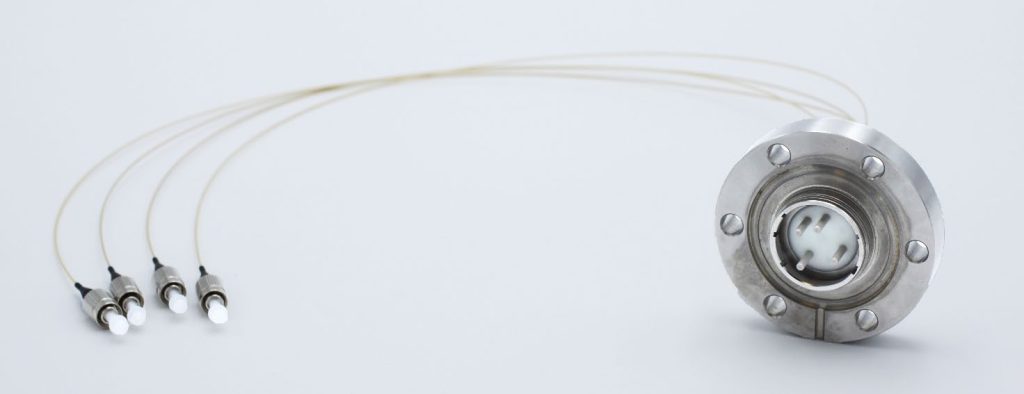
The entry/exit points of the cryostat for the optical fibers must be fitted with hermetic feedthroughs so as to preserve the quality of the vacuum inside the enclosure.
The concept of the demonstrator proposed by CONESYS Europe and SEDI-ATI consists of a hermetic multi-channel optical connector. It takes the form of a base plate incorporating both single-mode (SM) and multi-mode (MM) optical fibers, specially adapted to withstand radiation.
The fibers selected are Radiation Hardened (Rad-hard) fibers qualified by ITER.
No organic elements such as glue are used in the sealing process of the various components together. The optical fibers are glass-soldered into the optical points (ferrules), which in turn are glass-soldered into the connector housing, itself soldered to a flange (CF DN 40 in the case of this demonstrator), and the flange is soldered to the Cryostat casing.
Each connector contains 6 SM and MM optical fibers, and each flange contains between 1 and 7 connectors. All in all, ITER will be equipped with around 400 optical fibers via 75 circular connectors soldered onto flanges.
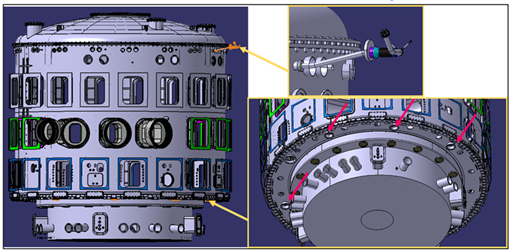
Measured performance
Before and after total irradiation of around 6 MGy at a rate of 10.5 kGy/h, the base plate successfully passed a Helium leak detection test of the order of 1×10-9 Pa.m3/s. No Radiation Induced Attenuation (RIA) was measured at the end of this test, which was considered a complete success. A second irradiation test confirmed the robustness of this demonstrator.
In early January 2024, CONESYS Europe also subjected the demonstrator to two successive immersion tests, first in dry ice (-78 °C), then in liquid nitrogen (-196 °C), without any change to its hermetic characteristics, once again demonstrating the integrity and robustness of the concept.
The collaboration between CONESYS Europe and SEDI-ATI Fibres Optiques
SEDI-ATI Fibres Optiques and CONESYS Europe are two companies of equivalent size, both located in France and working together since 2015.
Indeed, there are obvious complementarities between SEDI-ATI’s expertise in optical fibers and their integration into ferrules, and CONESYS Europe’s expertise in glass-to-metal sealing and the integration of these ferrules into mostly circular connectors with standardised interfaces for which CONESYS Europe is qualified by official organizations.
For this ITER project, SEDI-ATI is designing and integrating the ‘ferrules + optical fibers’ sub-assemblies, and CONESYS Europe is integrating them into the connectors and feedthroughs that it designs and which meet the requirements and standards of the Nuclear sector.
Based on the principle of the HERMOPTIC® connector, it is possible to create a circular electro-optical connector with the D38999 III interface.
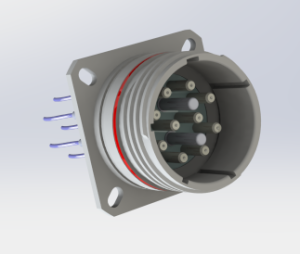
SEDI-ATISolution
Hermoptic®: Hermetic multi-channel connector based on glass-soldered optical fibers.
AdvantagesSEDI-ATI solution
- Fibers designed to withstand radiation,
- The mechanical and hermetic integrity of the base is preserved after irradiation with Gamma rays and exposure to very low temperatures,
- 100% mineral solution (no maintenance, ageing or degassing),
- Suitable for the nuclear, space and vacuum sectors.
Related products
-
Cryogeny fiber optic cables
You are looking for a fiber optic link working at extremely cold temperatures? SEDI-ATI can provide specific cryogeny fiber optic cables.
-
Custom-made hermetic fiber-optic feedthroughs
Following your specific requirements, SEDI-ATI can study the feasibility of building custom-made hermetic fiber-optic feedthroughs.
-
Inline hermetic fiber-optic feedthroughs
The RETA inline hermetic fiber-optic feedthroughs are designed for high & ultra-high vacuum applications. Some specific products of this product line are also suitable for pressure applications up to 1000 bars.
-
Radiation-resistant fiber optic cables
Optical fibers gather numerous advantages encouraging to integrate them in applications with radiative environments, associated with the civil, space or defense fields.
-
Vacuum fiber optic cables
SEDI-ATI Fibres Optiques offers both singlemode and multimode vacuum fiber optic cables for vacuum levels of 10-8 to 10-10 mbar.

